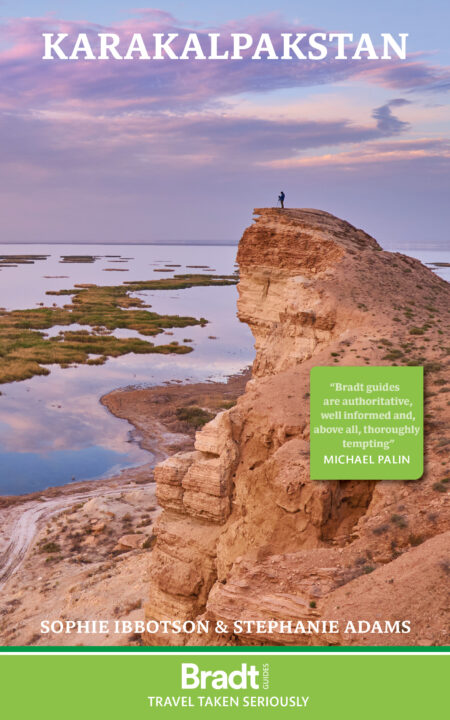“Karakalpakstan’s history and traditions are strong, but they are a foundation for development rather than tying people down to the past (…) What you will find time and again in Karakalpakstan is that people surprise you in wonderful ways, and whatever challenges they face, natural or manmade, they respond with creativity, determination and resilience.”
Sophie Ibbotson & Stephanie Adams, authors of Karakalpakstan: The Bradt Guide
‘How can you write a guidebook about Karakalpakstan? There’s nothing for tourists here!’ This wasn’t a reassuring start to one of the first conversations we had with a local on arrival in Nukus. It was a message we’d heard time and again in Uzbekistan, but even that was one up from ‘Karakalpak-what?’, which was the usual response abroad. If you are seeking adventure in an under-the-radar destination in already out-of-the-way Central Asia, Karakalpakstan is the place to go. It is such a well-kept secret, in fact, that even the most well-travelled of tourists is unlikely to have heard about it, let alone have been there.
This book, the first ever guidebook to the Autonomous Republic of Karakalpakstan, is our challenge to all those who have a black hole in their knowledge of geography, lack imagination or curiosity, or simply won’t make the effort to see what to us is now blindingly obvious: Karakalpakstan is an extraordinary place. Just over twice the size of Scotland, with a similar land area to Tunisia, and with human history dating back to the Palaeolithic period, it’s a destination that deserves not only more attention but also more respect.
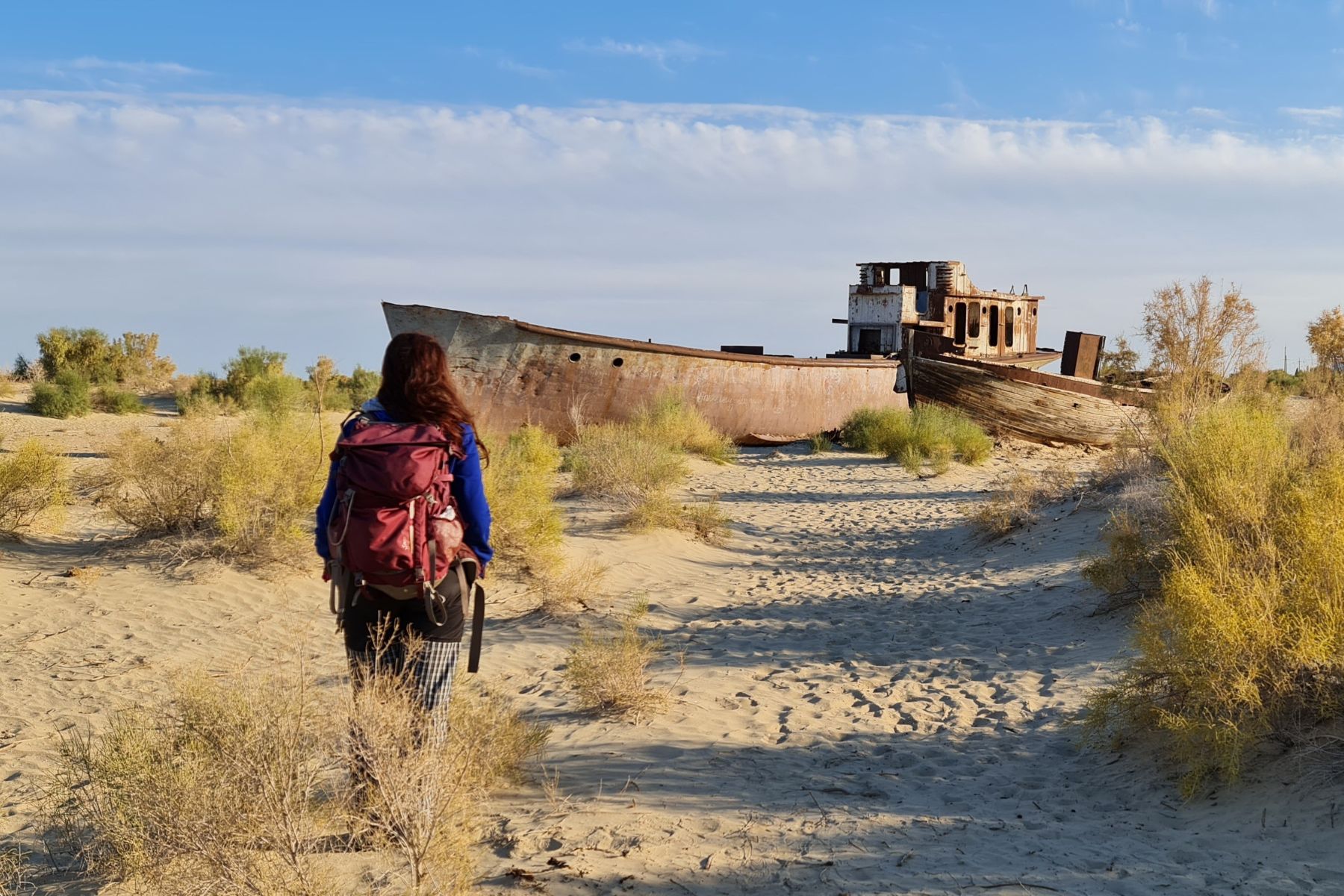
Karakalpakstan’s geography
The tragic thing is that even if people haven’t heard of Karakalpakstan, they may well know about the Aral Sea. The shrinking of what was within living memory the world’s fourth largest lake is one of the most serious – if not the most serious – manmade environmental disasters of the 20th century. And in Karakalpakstan the water level is now so low, and the end of the river so far from the shore, that the Aral Sea has passed the point of no return. It is no longer a case of wondering if the sea will disappear completely, but simply a question of when. If you do want the privilege of looking out at the last of the sea, watching the sunset shimmering on its waters, and perhaps even paddling in its waters, you had better get your skates on.
On a much happier note, the Aral Sea disaster has cast a spotlight on Karakalpakstan’s fragile ecosystems and directed much needed funding and expertise to conservation issues. There are now two national parks, both created since 2020, plus the Lower Amudarya State Biosphere Reserve, Saigachy Reserve and Sudochye-Akpetki State Reserve. Bukhara deer were on the brink of extinction in the 1970s but thanks to a reintroduction and breeding programme they are now thriving; and the Saiga Conservation Alliance is actively monitoring, managing and educating local people about the importance of saiga antelope, stabilising their populations, too. The stargazing in these protected areas is second to none, and thanks to a growing number of yurt camps in the deserts and on the shores of the Aral Sea you can spend a comfortable night out in the wild.
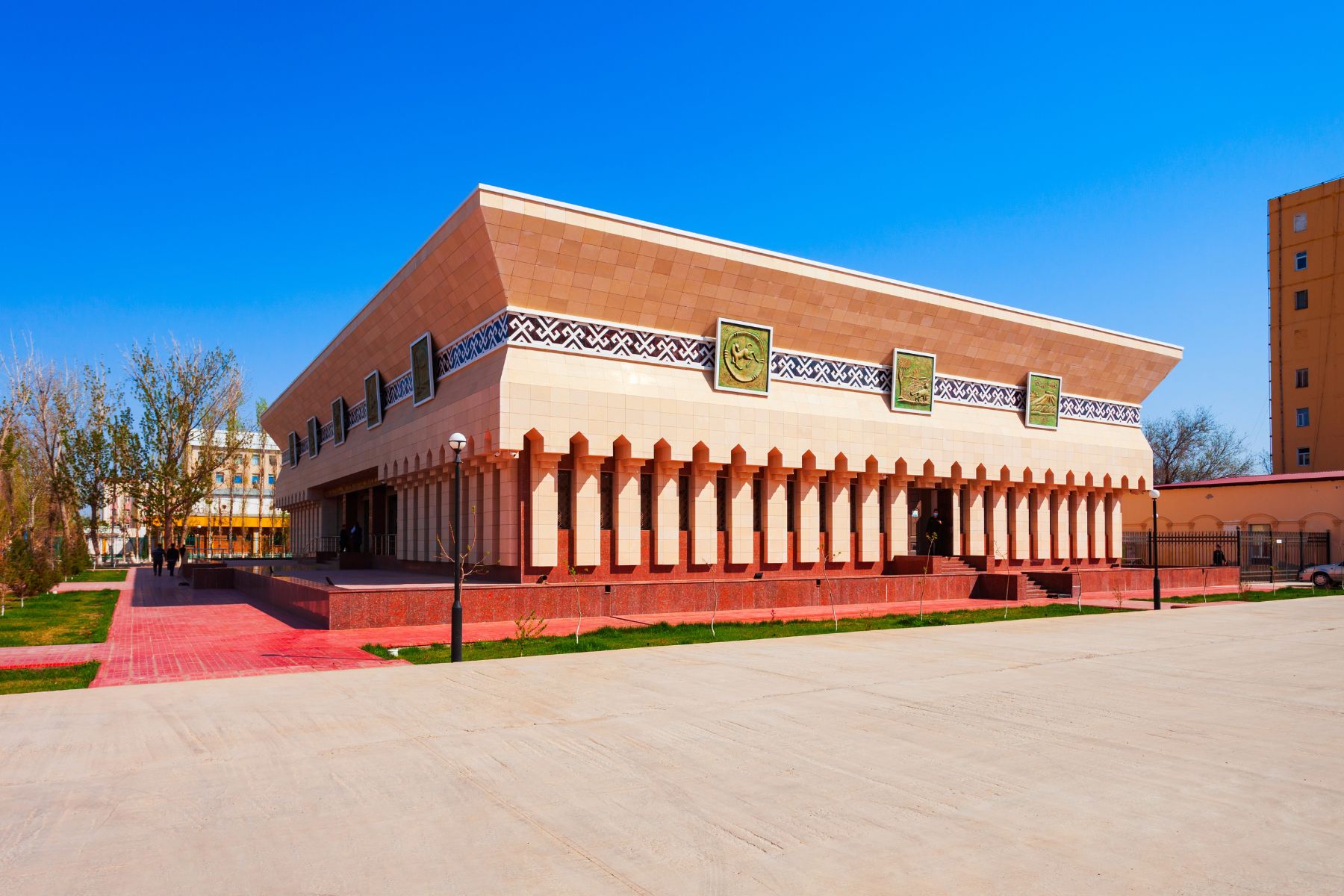
Karakalpakstan’s history
Turning now to its history, Karakalpakstan has long been on the frontier of Central Asian and Persian empires, all of which built substantial fortifications, and so you would be hard pushed to find anywhere in the world with a higher concentration of archaeological sites. You can see Neolithic petroglyphs made by a sophisticated ancient culture. There are more than 50 desert fortresses, many of which date back to the 1st millennium bc and are remarkably well preserved thanks to Karakalpakstan’s dry climate. Necropolises, shrines and even a Zoroastrian tower of silence teach about the beliefs and burial practices of people who lived hundreds and sometimes thousands of years ago. And if you want to find out how to delay Armageddon, you need to visit Mizdakhan
The intangible cultural heritage of the Karakalpaks and other communities living in Karakalpakstan is no less fascinating. Museums give a hint of the richness of the region’s applied arts, but to really understand and appreciate Karakalpakstan’s folk traditions it is best to visit Chimbay with its workshops of yurt makers, reed weavers, sculptors, jewellers and more. You can lose yourself in music and dance, and in the epic stories that have been transmitted in song from one generation to the next. Then, of course, there’s the food, with its mouthwatering, multicultural tastes of the Silk Roads, with flavours reminiscent of Turkey, Iran, China, and India, all combined with a local twist.
Karakalpakstan’s history and traditions are strong, but they are a foundation for development rather than tying people down to the past. Russian collector Igor Savitksy showed remarkable bravery and foresight in challenging Soviet authorities when he amassed his vast and controversial avant garde art collection in the 1960s and 1970s and preserved it for the world in Nukus, Karakalpakstan’s capital; and the founders of Stihia Festival recognised the potential of Muynak, a former fishing port now miles from the Aral Sea to host what has unpredictably become Central Asia’s foremost electronic music event. What you will find time and again in Karakalpakstan is that people surprise you in wonderful ways, and whatever challenges they face, natural or manmade, they respond with creativity, determination and resilience.
For more information, check out our guide to Karakalpakstan
Food and drink in Karakalpakstan
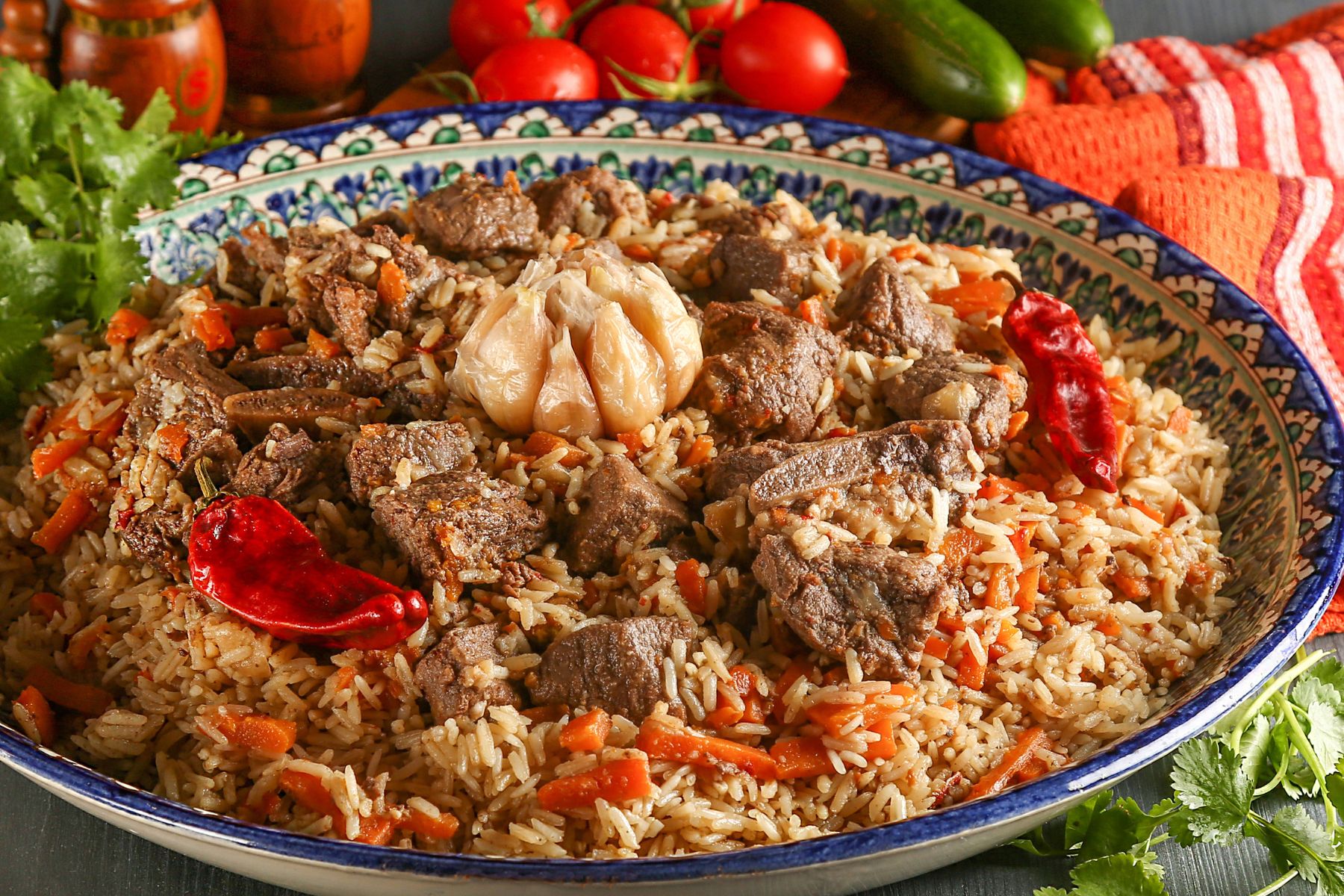
Food
Food in Karakalpakstan exhibits a wide range of culinary influences, reflecting the region’s Silk Road and Soviet history as well as the ingredients grown and made by the Karakalpak, Uzbek, Kazakh, Turkmen and other communities living here today. As the population was traditionally nomadic or semi-nomadic, and the dominant agricultural crop is cotton not foodstuffs, meat and carbohydrates are the dietary staples, but there is fantastic fresh produce in season, with market stalls groaning under its weight.
Whether you are eating breakfast, lunch or dinner, there will always be bread on the table. The traditional round, flat loaves are called non (a word with the same root as Indian naan), made from wheat flour. They are most delicious when eaten still warm from the tandor (clay oven) and are used for everything from dipping in sour cream to soaking up meat juices. In Turkish restaurants you can also find lavash, a thin, unleavened flat bread also cooked in a tandor. Every neighbourhood has local bakeries that supply families and cafés alike.
Very similar wheat doughs are used for many other Karakalpak dishes. These include bauirsak (thinly rolled rectangular pieces of dough fried in oil), sozban (large fried flat cakes), samsa (a stuffed, triangular pastry akin to an Indian samosa), and two local kinds of noodles, kespas and kaysas, which are cooked in milk and sour milk and, in the case of the latter, also seasoned with oil. Many restaurants also serve laghman, another variety of noodles that are common on Uzbek and Uighur cuisine and come soaked in a stew of meat and vegetables. Mayek borek is a form of layered pastry made with eggs, butter and fried onions. You will find variations of dumplings almost everywhere, including beshbarmak, a highly popular Kazakh dish, which is a combination of dough and boiled meat cooked in a meat broth; manti (steamed dumplings usually filled with meat or pumpkin); and pelmeni, the Russian equivalent of ravioli, which are stuffed and served in broth.
The most common meats in Karakalpakstan are beef and lamb, followed by chicken. Other meats such as horse, camel and rabbit are less commonly served, and your host would tell you proudly if they were going to give you these, so you are unlikely to eat them by accident. As Uzbekistan is a Muslim-majority country, it is very rare to see pork on a menu. It’s not illegal, there’s simply no local demand for it. Meats are usually roasted, boiled or grilled in kebabs called shashlik, which may include cubes of fat or vegetables as well as meat. Slices of meat also top plov, the rice-based national dish of Uzbekistan, which is included on UNESCO’s Intangible Cultural Heritage list. Historically fish was an important part of the diet due to the large fish stocks in the Aral Sea, but as those are now gone, it’s less common. Fish on a menu in places like Nukus and Muynak is likely to come from the Amu Darya or one of Karakalpakstan’s lakes. Usually it is deep fried.
If you are in Karakalpakstan in summer and early autumn, the markets are bursting with fresh fruits, some which are grown here and others which come from more fertile parts of Uzbekistan such as the Fergana Valley. The season starts with strawberries in April, then various kinds of cherries in May, peaches and apricots in June, watermelons (the size of beach balls) in July, plums in August and grapes, pomegranates, pears and persimmons in September and October. Apples – which coincidentally evolved in what is now Kazakhstan – are available all year.
The same markets are good places to pick up snacks for long journeys. Dried fruits and nuts are always on sale, as are wrapped chocolates and sweets, biscuits sold by weight, and crisps. If you want something more substantial to eat there and then, you can watch the shashlik sizzling on the grill and devour it with a freshly baked non, or have samsa hot from the tandor.
Vegetarians are in for a tough time in Karakalpakstan, and vegans even more so. These concepts are little understood, and even less frequently catered for. It is usually possible to identify some suitable salads on a menu, plus of course bread, but beyond that the best approach is to select a dish that could be made vegetarian with the removal or substitution of one of the ingredients. Be very specific about what you ask for; staff will do their best to help but need clear instructions. If you are going to be eating meals at a guesthouse or yurt camp, you will need to inform them of your dietary needs in advance so that they have time to plan and prepare something suitable.
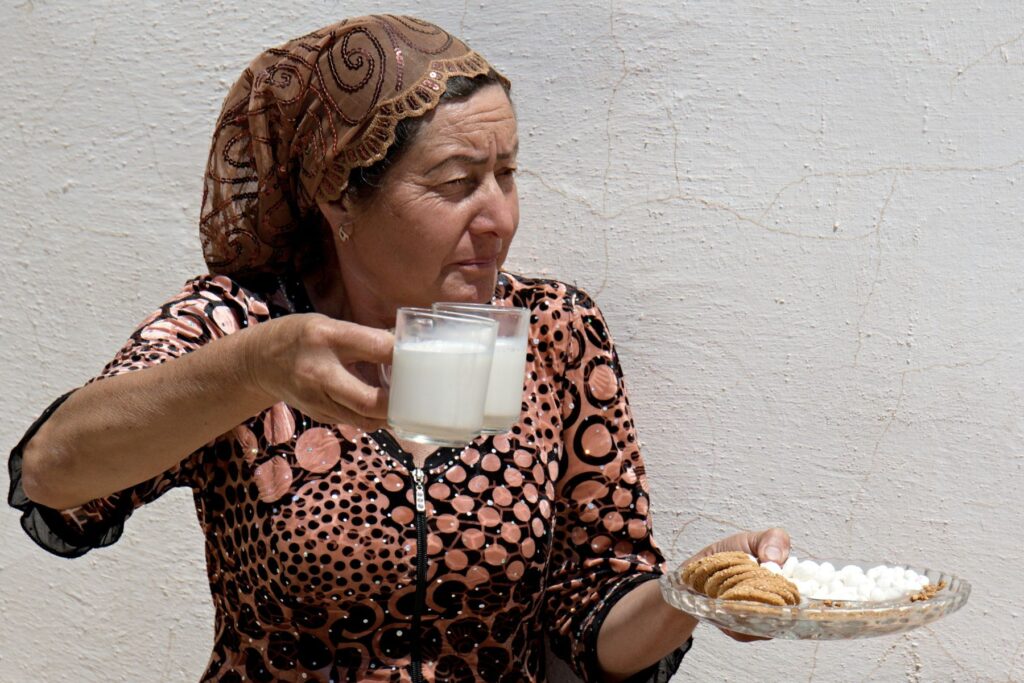
Drink
Tea is as much a cultural institution as it is a drink and the chaikhana (tea house) is central to any community: people go to do business as well as gossip and relax. Green tea (zilloniy chai) is most common, but black tea (chorniy chai) is also widely available. Both are drunk without milk but you will usually be offered sugar or lemon. In summer you may also be offered ayran or kefir (chilled yoghurt drinks).
Coffee is available in hotels and restaurants, but it is generally instant coffee and aficionados will be disappointed. The exception is in Nukus where there are several proper coffee shops grinding beans and able to serve anything from a double espresso to a frappuccino. Just don’t expect to be offered non-dairy milks.
In terms of other soft drinks, bottled water is available everywhere, but if you can bring your own reusable filter bottle, please do as there are no recycling facilities for single-use plastics and every used bottle ends up in landfill. Restaurants and grocery shops always have carbonated drinks in bottles and concentrate juice in cartons, from both international and local brands, and you can get freshly squeezed fruit juices on street side stalls and in the markets.
Alcohol is consumed in Uzbekistan, though less so than in the other Central Asian republics. Both beer and spirits (particularly vodka and whisky) are widely available in shops and restaurants, as well as in many hotels, and it is sometimes possible to buy Uzbek wines. Local brands are much less expensive than foreign ones owing to the high import taxes. There is no clear distinction between bars and restaurants, because bars always serve food as well as drinks, and restaurants often have music and a dance floor.
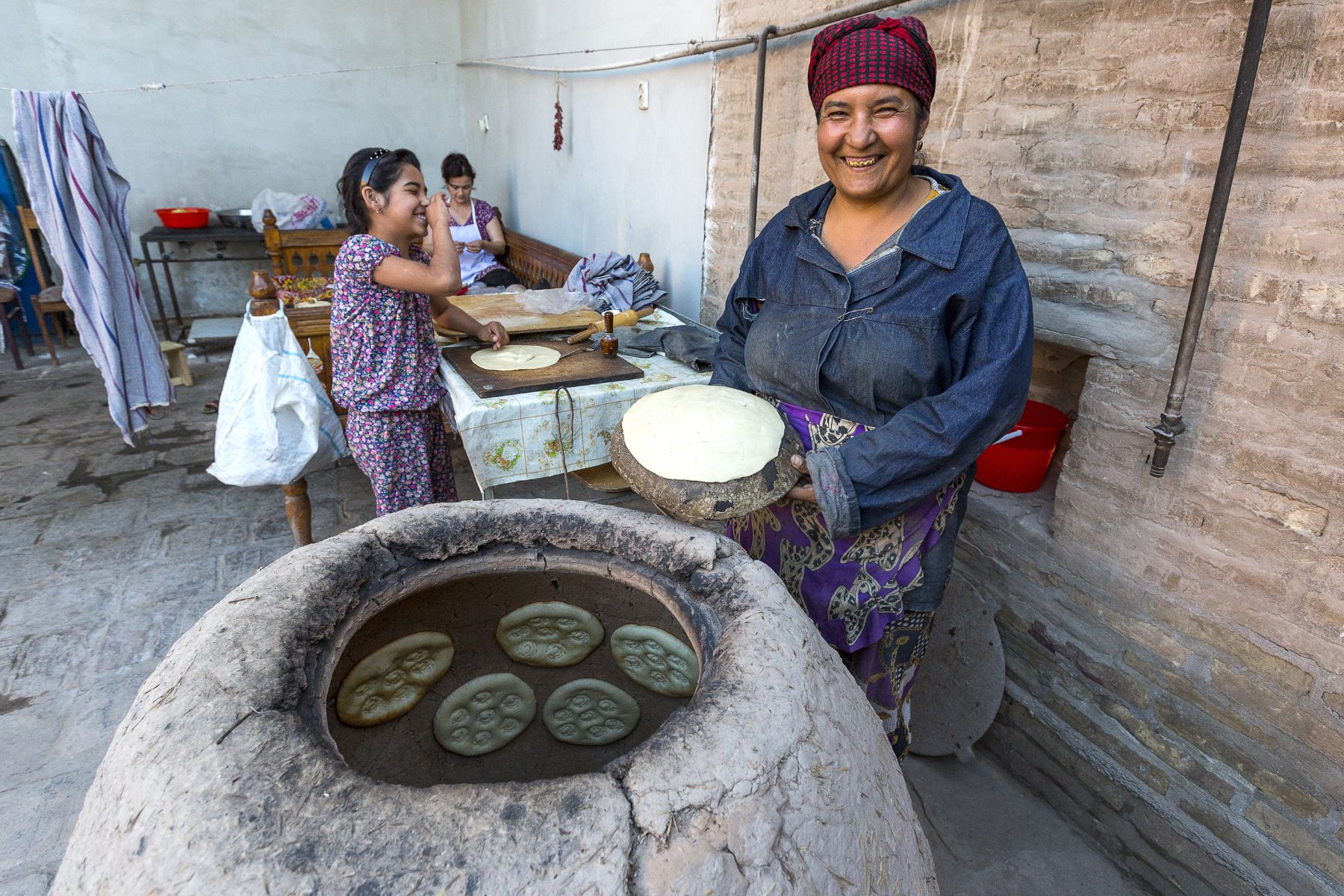
Eating out
Nukus’s restaurant and café scene has become much more vibrant in recent years, and it is the local middle class more than foreign tourists who are driving the growth and diversification of the hospitality sector. Here you have a wide variety of places to eat, including good Turkish and Korean restaurants in addition to those serving local cuisine. There are a number of restaurants where service is professional, there’s a good ambience, and you can have a leisurely evening with several courses and a few beers or a bottle of wine. Several Western-style cafés have their own bakeries and produce coffee and excellent cakes, which is great for a pick-me-up between museums.
Outside Nukus your options for eating out are very much more limited. Towns generally have a few simple, clean if not exactly atmospheric cafés all serving a similar menu of local dishes: shashlik, dumplings, salads, etc. Eating out is inexpensive, and although individual dishes are often tasty, the lack of variety on menus can be quite monotonous, so it is worth also visiting local markets for fresh fruit and other snacks. Having a non and a few chocolate bars or packets of crisps to hand can also be a saviour on long journeys; these are widely available in grocery stores. In remote areas, you may be invited to eat in local homes. Even if your hosts initially refuse payment, try to find some way to compensate them for their hospitality as feeding you will have cost them both money and time.
Health and Safety in Karakalpakstan
Health
Before you go
Comprehensive travel insurance should be high on your list when you contemplate travelling to Karakalpakstan. Choose a policy that includes medical evacuation (medevac) and make sure you fully understand any restrictions: it is not uncommon for insurance companies to exclude certain activities from cover. Leave a copy of the policy documents at home with someone you trust and keep a copy of them, along with the emergency contact number, on you at all times.
Your GP or a specialised travel clinic will be able to check your immunisation status and advise you on any additional vaccinations you might need. It is wise to be up to date on tetanus, polio and diphtheria (now given as an all-in- one vaccine that lasts for ten years), and hepatitis A.
The hepatitis A vaccine comprises two injections given about a year apart, though you will have cover from the time of the first injection. Once completed, the course gives you protection for 25 years. The vaccine is sometimes available on the NHS. Hepatitis B vaccination should be considered for longer trips (one month or more) and by those working in a medical setting or with children. The standard vaccine schedule comprises three doses taken over a six-month period, but for those aged 16 or over it can be given over a period of 21 days if time is short. The rapid course needs to be boosted after a year. A combined hepatitis A and B vaccine, ‘Twinrix’, is available, though at least three doses are needed for it to be fully effective. For those under 16, the minimum time is over eight weeks.
Typhoid vaccine (injected or oral) is recommended for those travelling in rural areas and when there may be difficulty in ensuring safe water supplies and food.
Rabies is prevalent throughout Uzbekistan and vaccination is highly recommended for those travelling more than 24 hours from medical help or for those who will be coming into contact with animals as there is unlikely to be treatment available within the country.
Uzbekistan is recognised by the World Health Organisation as a malaria-free country, so there is no need to take antimalarials.
Travel clinics and health information
A full list of current travel clinic websites worldwide is available on at the ISTM website. For other journey preparation information, consult Travel Health Pro (UK) or the CDC (US). All advice found online should be used in conjunction with expert advice received prior to or during travel.
Prescription medication
If you require prescription medication it is best to bring adequate supplies with you for the duration of your trip as you cannot guarantee to be able to get the same products locally. Bring a copy of the prescription with you and try to keep the medication in its original packaging.
Psychotropic and narcotic medications (including opioids such as codeine and anxiolytics like diazepam or Xanax) are tightly controlled in Uzbekistan and you should declare these on a customs form before arrival. The interpretation of the regulations by the Uzbek Embassy in London is that you can bring up to seven days’ dosage of these medications provided that you have a signed letter from your doctor and declare them to customs on arrival.
Medical system in Karakalpakstan
The medical system in Karakalpakstan, as across Uzbekistan, is seriously overstretched. The quality of medical training fell after the end of the Soviet era: many doctors left to find work abroad, and today hospitals are rundown and equipment is out of date. Outside the major cities there is also a shortage of drugs and other medical supplies. If you are ill or have an accident, you will be able to receive emergency treatment at a basic district hospital, but will then require medevac to a country with more developed medical infrastructure for ongoing care. British citizens should be aware that the reciprocal healthcare agreement between the UK and Uzbekistan formally ended in 2016, though the reality is that hospitals do still provide emergency treatment for free.
Every town in Uzbekistan has countless pharmacies (marked ‘Apteka’ or ‘Darikhana’), selling a range of generic drugs. You do not need a prescription to purchase medication but should read the instructions carefully (or get someone to explain them to you).
Other potential health concerns to be aware of while travelling in Karakalpakstan include:
- Traveller’s diarrhoea
- Insect bites (particularly ticks)
- Sunstroke
- Rabies
- Tetanus
Safety
The UK’s Foreign, Commonwealth and Development Office (FCDO) generally considers Uzbekistan to be a safe country for foreigners to travel in. It regularly updates its travel guidance, and the latest advice is available online at the FCDO website.
Petty crime is rare but not unheard of, so do exercise usual caution regarding your belongings, especially when travelling on public transport. Some tourists do experience low-level corruption from traffic police and other officials, including at border crossings. If someone tries it on, ask for a receipt and don’t hand over documents or cash on the street. Ask to be taken to the police station instead.
Driving standards in Uzbekistan are generally poor, and Karakalpakstan is no exception. The wide variety of vehicles on the roads, from decrepit Soviet-era makes to large modern 4x4s, makes for traffic travelling at different speeds. Overtaking on the inside and illegal U-turns are among many common infringements in the cities. The poor state of repair of many roads, with potholes and often inadequate or nonexistent street lighting, adds to the difficulties. In rural areas, animals and pedestrians wandering into the road present a considerable risk.
If you are driving yourself you will need to be careful and cautious, always wear a seatbelt, and never drink and drive. Try to avoid driving outside cities after dark as roads are poorly lit and other vehicles may not have working lights. Bad driving also creates a risk to pedestrians.
When on foot, you should avoid the local practice of crossing busy roads by walking out to the centre and waiting for a gap in the oncoming traffic, even if this means taking a detour to cross at the next set of traffic lights. Do not expect cars to stop for you, even if you are on a zebra crossing.
Female travellers
Uzbekistan is generally a safe country for women to travel in, and there are no specific legal or cultural restrictions imposed on women (either locals or foreigners). The social conditions of women improved significantly during the Soviet period, and the enrolment of women in education and in the workplace remains high. Gender roles remain traditional but relaxed.
Women should, however, exercise the usual personal safety precautions. Unaccompanied women may receive unwanted attention in bars and clubs, but this is usually deflected with a few terse words. If the harassment continues, alert the management or leave the premises and find a more pleasant alternative. Try to avoid physical confrontation, as alcohol-fuelled violence and being tailed home are not uncommon. Domestic violence is high in Uzbekistan, as it is across Central Asia. There have been suspected cases where ‘date rape’ drugs have been used; keep a close eye on your drink, and do not accept drinks from strangers.
You should dress practically and do not need to be overly worried about modesty: in summertime wearing loose sleeves to avoid sunburn is more of a priority. However, if you do intend to visit mosques and shrines it is polite to cover your head, shoulders and legs, and local people will appreciate your consideration.
LGBTQ+ travellers
Homosexuality (specifically sodomy) is illegal in Uzbekistan and Article 120 of the country’s penal code punishes voluntary sexual intercourse between two men with up to three years in prison. Sexual intercourse between two women is not mentioned in the code.
Many people in Uzbekistan are deeply conservative, especially when it comes to the issue of sexuality, and homosexuality is still often seen as a mental illness (a hangover from the Soviet period). Muhammad Salih, leader of the People’s Movement of Uzbekistan, said publicly in 2012: ‘I support a civilised way of isolating gays and other sick members of society so that they could not infect healthy people with their disease.’ Sadly, his views are widely shared. Homosexuals in Uzbekistan regularly experience harassment, including from the police, who heavily monitor LGBTQIA-friendly establishments, often forcing them to close. Police detention and the threat of prosecution are regularly reported.
If you are travelling with a same-sex partner you should refrain from public displays of affection and be exceptionally cautious when discussing your relationship with others: it is often simplest to allow others to assume you are simply travelling with a friend. Double rooms frequently have twin beds, so asking for one room is unlikely to raise eyebrows in any case.
Travelling with a disability
Travellers with disabilities will experience difficulty travelling in Uzbekistan. Public transport is rarely able to carry wheelchairs, few buildings have disabled access, and streets are littered with trip hazards. Hotel rooms are often spread over multiple floors without lifts and assistance from staff is not guaranteed. If you have a disability and are travelling to Uzbekistan, you would be advised to consult a local tour operator in advance and travel with a companion who can help you when the country’s infrastructure and customer service fall short.
Travelling with kids
All communities in Karakalpakstan attach great importance to family life. Children are welcomed in restaurants and shops, but you may have difficulty manoeuvring pushchairs in and out of buildings and along broken pavements. Nappies, baby food and other similar items are available in supermarkets and larger stores, but you are unlikely to find European brands.
Journeys by car and public transport are often long and uncomfortable, however, and food supplies are erratic, which may deter families with younger children travelling beyond Nukus and those tourist sites accessible on a day trip from the capital. Ensure you stock up with plenty of snacks before leaving a town, and take plenty of entertainment options along for the ride.
Travel and Visas in Karakalpakstan
Getting there and away
Karakalpakstan is a remote destination and there is no quick and easy way to get there. However, regional connectivity is improving rapidly and it is expected that more flight connections will become available during the lifespan of this guide. A high-speed train connection to Nukus has also been announced, which would connect the city to Tashkent, Samarkand, and Bukhara, and should be operational by the end of 2026.
By air
If you are visiting Karakalpakstan from abroad, the likelihood is that you will have to fly first to Tashkent, Bukhara, Samarkand or Urgench. Nukus does have an international airport, but its only international flights are to Aktau in Kazakhstan and Moscow. From Tashkent there are two domestic flights a day with Uzbekistan Airways (1hr 40mins; from US$80) to Nukus and three flights a week to Muynak, via Nukus; otherwise you can travel by rail or road.
A wide range of airlines now fly to Uzbekistan and the number of flight routes is increasing every month. The airlines listed below are most likely to be useful; where available, the phone numbers given are for their local offices in Uzbekistan.
By rail
Karakalpakstan’s railway infrastructure mostly dates from the Soviet period, but as a consequence it is linked to Kazakhstan and Russia as well as to other parts of Uzbekistan. In 2022 President Mirziyoyev announced that the line to Nukus would be electrified, connecting the city into Uzbekistan’s high-speed rail network and reducing the travel time between Tashkent and Nukus from 16 hours to 7 hours. The completion date of this project is yet to be set but it should be before the end of 2026. This will be a much faster, more comfortable option than the slow and very basic existing trains.
There are daily departures from Tashkent (16hrs) and Bukhara (9hrs) to Nukus, and from Tashkent (21hrs) to Kungrad. Twice a week there is a train from Andijan to Kungrad (27hrs). Trains also cross the international border from Kazakhstan: there are four trains a week from Volgograd (39hrs) to Nukus, which stop en route in Karakalpakiya, Kungrad, and Khujayli; and three trains a week from Beyneu (8hrs 30mins) to Nukus, which also stop in Karakalpakiya and Kungrad.
The easiest way to check timetables and buy tickets for trains within Uzbekistan is online via the O’zbekiston Temir Yo’llari (Railways of Uzbekistan) website. If tickets appear to be sold out on the website, the route you want isn’t listed, or you need to buy a ticket for an international train, contact Advantour.
Ticket classes On the regular trains, these are categorised in the Russian style. First-class accommodation (Spalny Vagon; SV or es-veh; also known as deluxe) buys you an upholstered seat in a two-berth cabin. The seat turns into a bed at night. Second class (Kupé) is slightly less plush, and there are four passengers in a compartment. Third class (Platskartny) has open bunks (ie: not in a compartment) and leads to lots of interaction with fellow passengers.
If you are travelling on the Afrosiyob trains (Uzbekistan’s high-speed trains) then there are three classes of tickets: economy, business and VIP. These all get you seats but with increasing levels of comfort, and even economy class has AC, plenty of legroom, and free cups of tea and snacks.
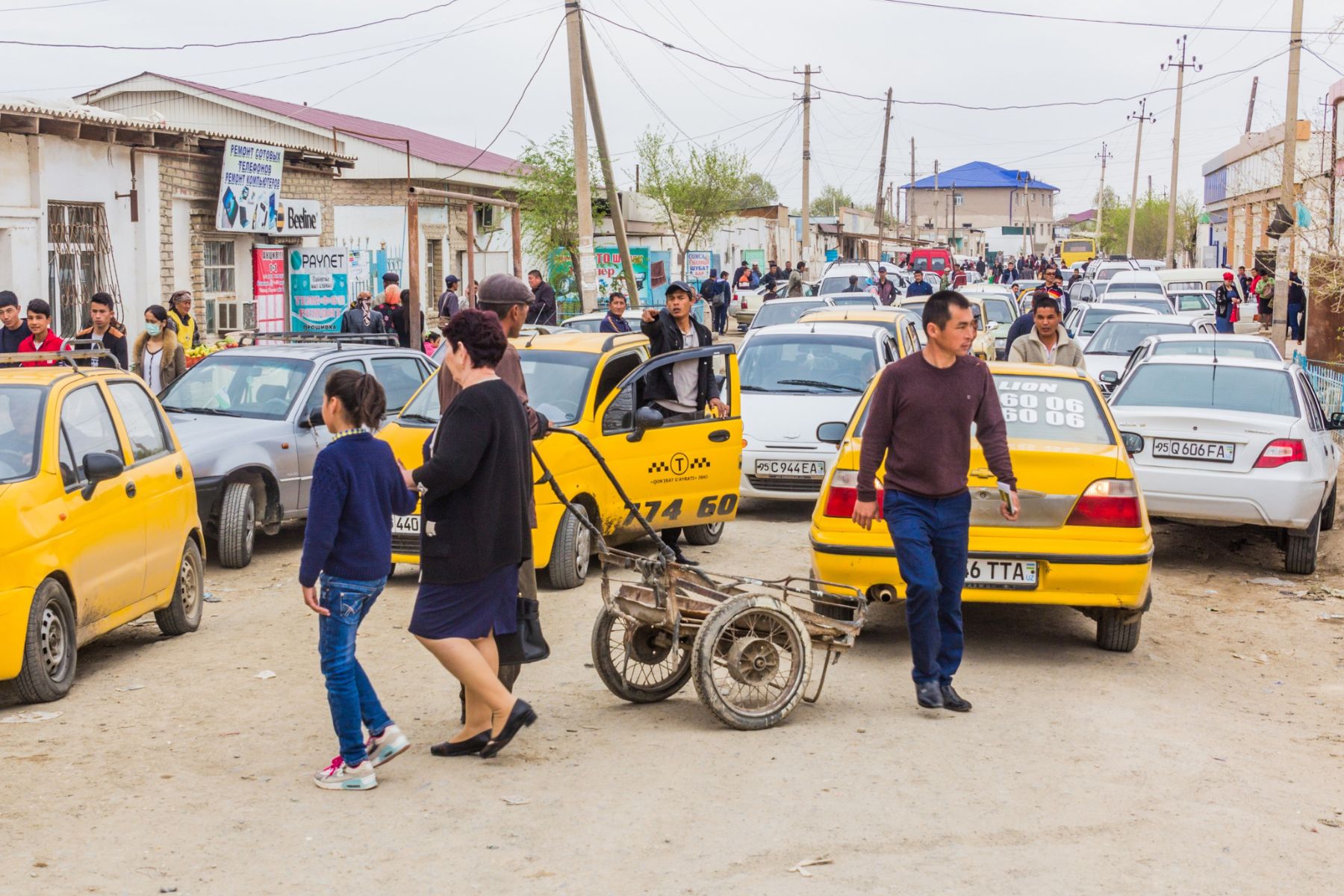
By road
The combination of border closures between Uzbekistan and Afghanistan and Turkmenistan, and the ongoing attack on Ukraine by Russia, means that it is now much more difficult to reach Uzbekistan by road, especially from Europe, than it was a few years ago. We do live in hope that the situation will improve during the lifespan of this guide, however, at which point regional movement across land borders will also become easier, and overlanders, cyclists, hitchhikers and long-distance bus enthusiasts can rejoice. For now, the land border with Kazakhstan is open and you can cross directly into Karakalpakstan. The conveniently located border with Turkmenistan was closed owing to Covid-19, but reopened March 2023. However, at the time of going to press, there were no reports of tourists having crossed. You can check the latest status and requirements of all Central Asia’s border crossings at Carivanistan’s border crossings page.
If you are bringing your own vehicle into Uzbekistan (regardless of the entry point) you will have to declare it on the usual customs form, plus fill in additional paperwork to be entered on to the customs computer system. Theoretically at least, you will not be allowed to leave the country unless you take the vehicle with you. Occasionally, you may be told by border officials looking for a bribe that right-hand-drive vehicles cannot enter Uzbekistan; this is not true, so stand your ground and ask to speak to a more senior member of staff. Expect to have the vehicle thoroughly inspected and to have its contents passed through the X-ray machine.
From Kazakhstan
There are several crossing points between Kazakhstan and Uzbekistan but to enter directly into Karakalpakstan you need the Tejen crossing near Karakalpakiya. The border opens at 09:00 and on the Kazakh side trucks, processed in batches of 30, are given priority over private cars, so you may have to wait for up to 2–3 hours at busy times. If you are crossing on foot, you will need to take a taxi from the border post to the closest town, Karakalpakiya, which is 20km away and has a train station; or arrange for a car and driver to meet you at Tejen. There are no buses, minibuses or shared taxis.
From Turkmenistan
When Turkmenistan reopens its borders, there are two conveniently located border posts for Karakalpakstan. The Khujayli–Konye Urgench border crossing (09:00–12:30 & 13:30–18:00) is a 30-minute drive southwest of Nukus. Shared taxis wait on both sides: it should cost you no more than US$2 from Konye Urgench to the border, and a maximum of US$10 from the border to Nukus.
Further south in Uzbekistan’s Khorezm Region, but convenient for the southern part of Karakalpakstan, is the Shavat–Dashoguz crossing (09:00–12:30 & 13:30– 18:00), which is around 50km west of Urgench. It can only be reached by taxi (around US$15 from Urgench or Khiva) and requires a shuttle (US$1) between the border posts; on the Turkmen side, there are shared taxis to Dashoguz (US$1).
Within Uzbekistan
As Karakalpakstan is within Uzbekistan, no border formalities are required when entering from the neighbouring regions of Bukhara, Navoi and Khorezm: it is like driving between England and Wales. Upgrading road infrastructure is a priority for the government and construction work is ongoing, but with such vast distances to cover, the road conditions are still patchy and driving can be slow.
The drive from Urgench to Nukus is 180km and takes approximately 3hrs. There is a daily bus and numerous taxis and shared taxis ply the same route. There are also daily buses to Nukus from Bukhara (8hrs), Navoi (10–12hrs), Samarkand (12– 14hrs) and Tashkent (16–18hrs) but given the distances involved you should plan to break your journey en route, or perhaps consider flying or taking the sleeper train.
Getting around
Karakalpakstan is a large destination with inadequate transport infrastructure, which makes travel between many of its tourist attractions time consuming and uncomfortable. In many places you will need a taxi or other private vehicle as there is no public transport.
By air
Uzbekistan Airways flies three times a week from Nukus to Muynak. The flight takes one hour, so although it is more expensive than going by road it can be a convenient option for those pushed for time.
By rail
A surprising number of towns in Karakalpakstan have a railway station, though not all of these have regular passenger services. Most useful for tourists is the line running north from Nukus towards Kazakhstan, as four trains a week stop at Khujayli, Kungrad and Karakalpakiya. Most tickets can be purchased in advance online but they are also available from the ticket desk at any station. If you are having difficulty finding information about trains or booking tickets, contact Advantour.
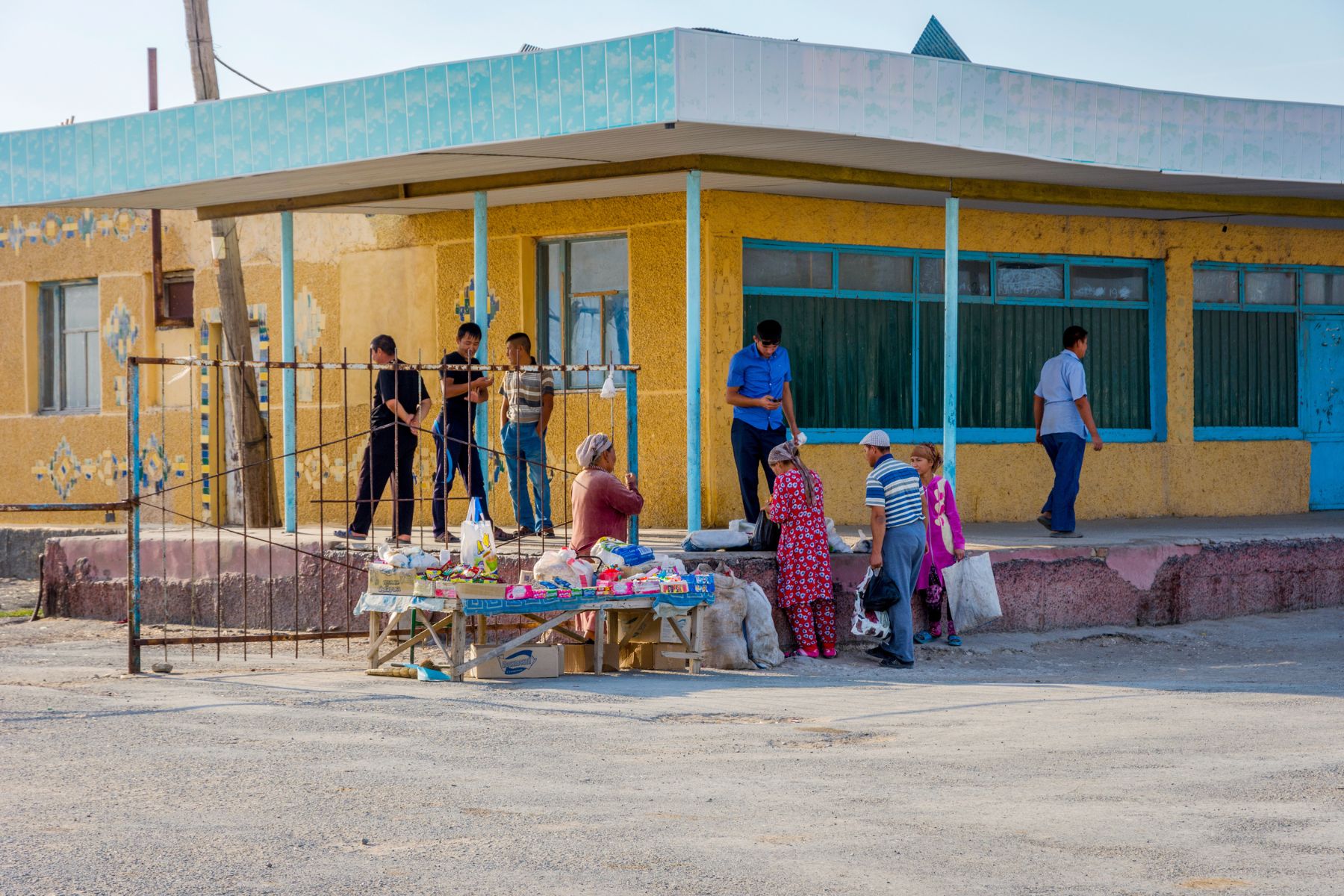
By road
The majority of journeys in Karakalpakstan are by road. Upgrading the road surfaces on highways is a priority for the government and most of the work on the A380 running northwest from Nukus to the border has been completed, but there are still some sections in poor condition and trucks and cyclists alike must dodge the potholes or cross temporarily on to the parallel desert tracks for a smoother ride. Beyond the major routes, there is little signage and the road quality deteriorates significantly. In many areas roads are unsurfaced tracks through the desert. Street lighting is nonexistent outside towns (which cuts down on light pollution), but it is in any case inadvisable to drive after dark.
Karakalpakstan’s cities and larger towns are linked by buses, but these are infrequent and often quite old and uncomfortable. Much more common are the shared taxis: regular cars taking multiple paying passengers heading to the same destination, which depart whenever they are full and are only a little more expensive than the bus. If you speak a few words in common, it can liven up the journey, but there is always the risk that you’ll be squashed in next to someone who hasn’t washed, is travelling with a live chicken, or insists on smoking in the car. If you don’t want to wait – or you want more space – you can pay for the empty seats, at which point it is no different than a private taxi. Note that taxis of all kinds are not registered taxis but rather local people happy to chauffeur a paying passenger to their destination – they may or may not drive for a living. You will generally find a taxi stand near the main bazaar and/or near the bus station, but if there are two or more stands they may be going to different places. Be sure to check the Getting there and away section of the relevant chapter in the guide.
You will sometimes see the small white minibuses known as mashrutkas in Karakalpakstan. Generally these run along set routes within a city, but occasionally they shuttle back and forth between two nearby towns. Fares are very cheap but the minibuses can be overcrowded and are not always well maintained.
For longer journeys you may wish to hire a car and driver for several days. Prices start from US$50 per day but increase significantly if you want to go to the Aral Sea. There are no international car rental companies in Karakalpakstan and we seriously advise against self driving beyond the main roads due to the remoteness of these areas and the potential difficulties and dangers of driving in the desert.
Street names and addresses
Many streets are named after notable local or national figures, for example Sabir Kamalova, in which case they are listed in this guide with the first initial and the surname (ie: S Kamalova), as generally only the surname is used on the street signs and when giving directions. Amir Timur and Islam Karimov are notable exceptions to this rule. There are also multiple variations in spellings due to the difficulty of transliterating Karakalpak, Uzbek or Russian names written in Cyrillc script into Latin script. To further confuse you, some streets have two names. Usually these are a Soviet-era name and a new name, but local people may remember one and not the other, or use the two interchangeably.
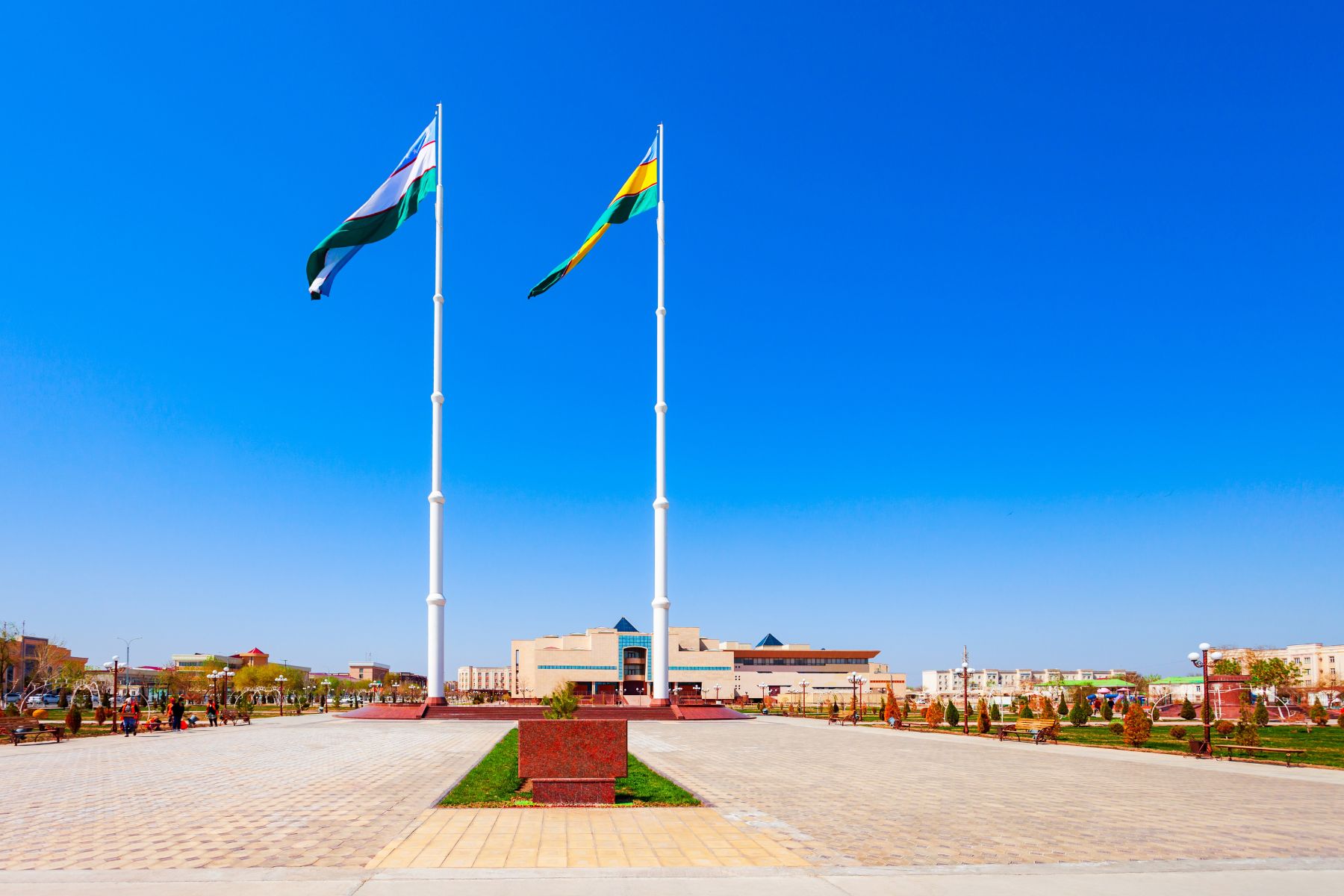
Visas
Uzbekistan’s Ministry of Foreign Affairs sets the visa policy for the entirety of the Republic of Uzbekistan, including Karakalpakstan. More than 90 nationalities are now eligible for visa-free entry to the country for up to 30 days. This includes those with passports issued by the UK, EU, Australia, Canada, Israel and New Zealand. You can check the latest list of eligible countries here. If you wish to stay longer than 30 days you can leave Uzbekistan and re-enter, which restarts the clock; otherwise you can apply for a paper visa at an Uzbek Embassy.
Travellers from nearly 60 countries which are not yet eligible for visa-free entry are permitted to apply for an e-visa. The list of countries is available at the same MFA link above. At the time of writing, US and Indian passport holders both require an e-visa but it is hoped that they will be added to the visa-free list during the lifetime of this edition. You should apply through the Official Electronic Visa Portal. It costs US$20 and is valid for 90 days from the date of issue. You can stay in Uzbekistan for up to 30 days within that 90-day period. Payment is by credit or debit card but the payment processing is temperamental so you may need to try several times with different cards to get the transactions to go through.
All remaining nationalities require a print visa. You should complete the online form, download and print it out, and sign it in black ink. You will need to submit the form along with your letter of invitation, passport, a photocopy of the photo page of your passport, and two passport photos to an Uzbek Embassy. The cost of this visa is dictated by your nationality, where you are applying, the length of your stay and whether it is for single, double or multiple entry. Note that your passport must have at least two empty pages and be valid for at least six months after the end of your visit to Uzbekistan.
If Uzbekistan does not have diplomatic representation in your country of residence, it is sometimes possible to arrange in advance for a visa to be issued on arrival at Tashkent International Airport but not at other entry points. You should contact a tour operator to arrange this, and you will need both your letter of invitation and approval letter (a form you will be issued to present on arrival) to check in for your flight.
Extending your visa once you are in Uzbekistan is difficult: most visitors prefer to leave and re-enter. However, it is in theory at least possible to obtain a seven-day extension from the Office of Visa and Registration (OVIR) at Tashkent Airport or at 22 Chekhov for US$40.
Letter of invitation
If you require a print visa, you will need to get a letter of invitation before you submit your visa application. The letter of invitation has to be prepared by a tour operator in Uzbekistan (if you book through an international tour operator then this will be their ground agent in Uzbekistan) and approved by the Ministry of Foreign Affairs.
It is worth checking with the tour operator before booking but in general you will be expected to provide them with a colour scan of the photo page of your passport, and a colour scan of a letter from your employer confirming your job title and that you are employed. The latter is not required for retired people and a declaration on headed paper is adequate if you are self-employed. The tour operator will submit these documents to the Ministry of Foreign Affairs, who will review the application within seven working days (three working days for the expedited service). If your letter of invitation application is approved, the Ministry of Foreign Affairs will send a Telex confirmation to the Uzbek Embassy where you intend to apply for your visa, and the tour operator will send you a scan of the letter of invitation which includes that Telex number.
Registration
The requirement for foreigners to register within three days of arriving in any given place in Uzbekistan is an irritating overhang from the Soviet period that is long overdue for abolition. Hotels now use an online registration system, but may sometimes still give you paper slips to confirm your stay. If you take an overnight train journey, keep the ticket stub or booking confirmation as proof of your whereabouts. If you are camping, staying with friends or at a homestay for more than three nights, you should register at the local OVIR (foreigner’s registration office) to ensure you and your hosts are in the clear. The OVIR in Nukus (09:00–13:00 & 14:00–18:00 Mon–Fri) is at Islam Karimov 104A. There is no cost to register at the OVIR but if you do not register you may be fined.
Additional permits
Access to some areas of Uzbekistan, including national parks and reserves, sometimes requires a permit and the process for acquiring it is often poorly defined. Where permits are required in Karakalpakstan (for example to visit the Saigachy Reserve) we have given details in the relevant sections.
Embassies
For a full list of Uzbekistan’s embassies overseas and foreign embassies in Tashkent, visit the Embassy Pages listings for Uzbekistan.
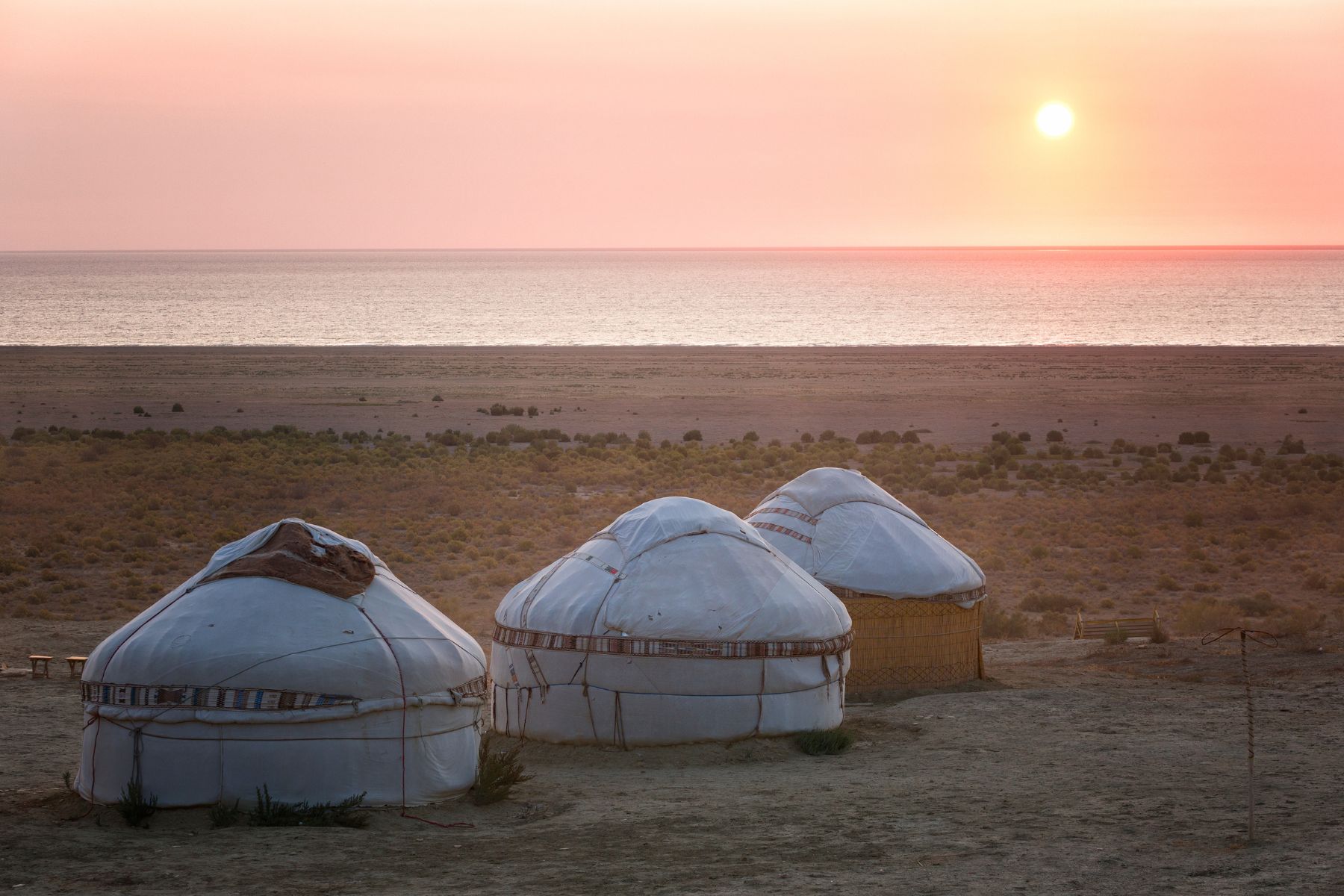
When to visit Karakalpakstan
Karakalpakstan has an extreme continental climate, meaning that it gets very hot in the summer with temperatures well into the 40 ̊Cs, and is very cold in the winter, with average temperatures in January between -5 and -8 ̊C. With climate change, extreme temperatures are more common, as are dust storms. Although this doesn’t actually prevent you travelling at those times, it does mean that outdoor sightseeing will be uncomfortable, and in winter the off-road tracks to the Aral Sea can become blocked by snow and ice. The yurt camps there will in any case be closed in wintertime.
We recommend, therefore, that you plan your trip to Karakalpakstan between March and June or September and November. Not only will the weather be more comfortable in these months but there will also be plenty of things happening that you might want to see or participate in. This includes Navruz, the pre-Islamic Persian New Year celebration on 21 March (spring equinox); the archaeological excavation season; biannual bird migrations; Stihia, an annual electronic music, arts and science festival founded in Muynak that now moves between different locations each year; and plenty of live performances and exhibitions in Nukus.
What to see and do in Karakalpakstan
The appeal of Karakalpakstan is the huge variety of destinations and experiences it offers. In a matter of days you can explore vast salt flats and geological formations that are millions of years old; go paddling in the Aral Sea; contemplate the enormous historical importance of ancient fortresses and burial grounds; visit national parks and nature reserves protecting critically endangered species of animals and birds; and, remarkably, view the world’s second largest collection of Russian avant garde art. We have attempted to distil the main attractions into this short list of highlights, the must-see sights of Karakalpakstan.
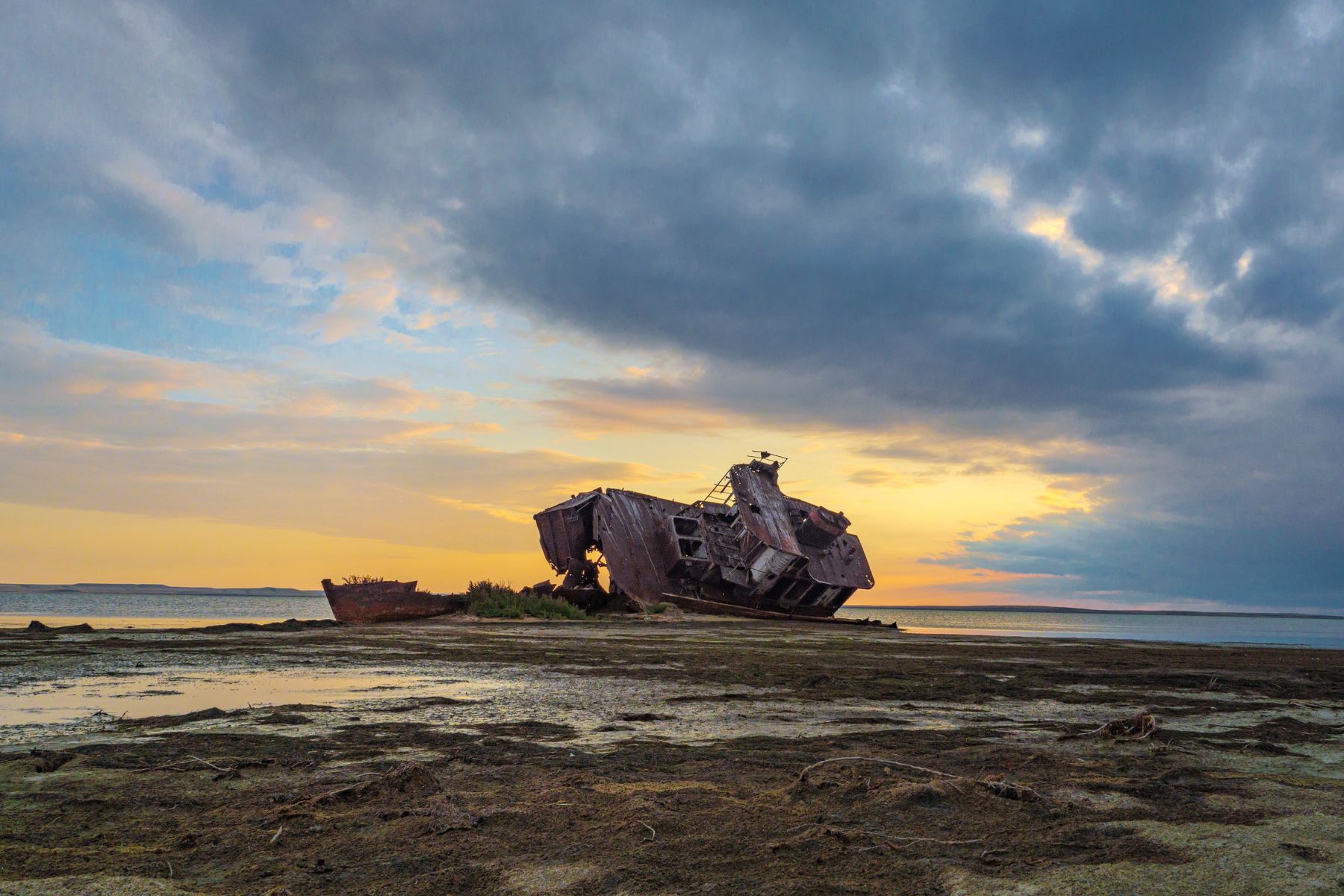
Aral Sea
Far more famous, sadly, than Karakalpakstan itself is the Aral Sea, an endorheic lake (ie: a body of water with no outflow) that until the late 20th century covered a large proportion of this region but is now but a shadow of its former self. The shrunken sea rightly demands the attention of scientists and has caught the curiosity of disaster tourists, but those are far from the only reasons to visit. Even now, the Aral Sea is a place of extreme beauty. There are important wildlife populations in the newly created Aralkum National Nature Park and in the Saigachy Reserve, which flank the sea on either side. Driving along the Ustyurt Chinks looking out towards the Aral Sea is an unforgettable lesson in geology. And most of all, travelling here is a chance to reflect on how mankind is destroying our planet and the need for us all to be more responsible in our use of natural resources.
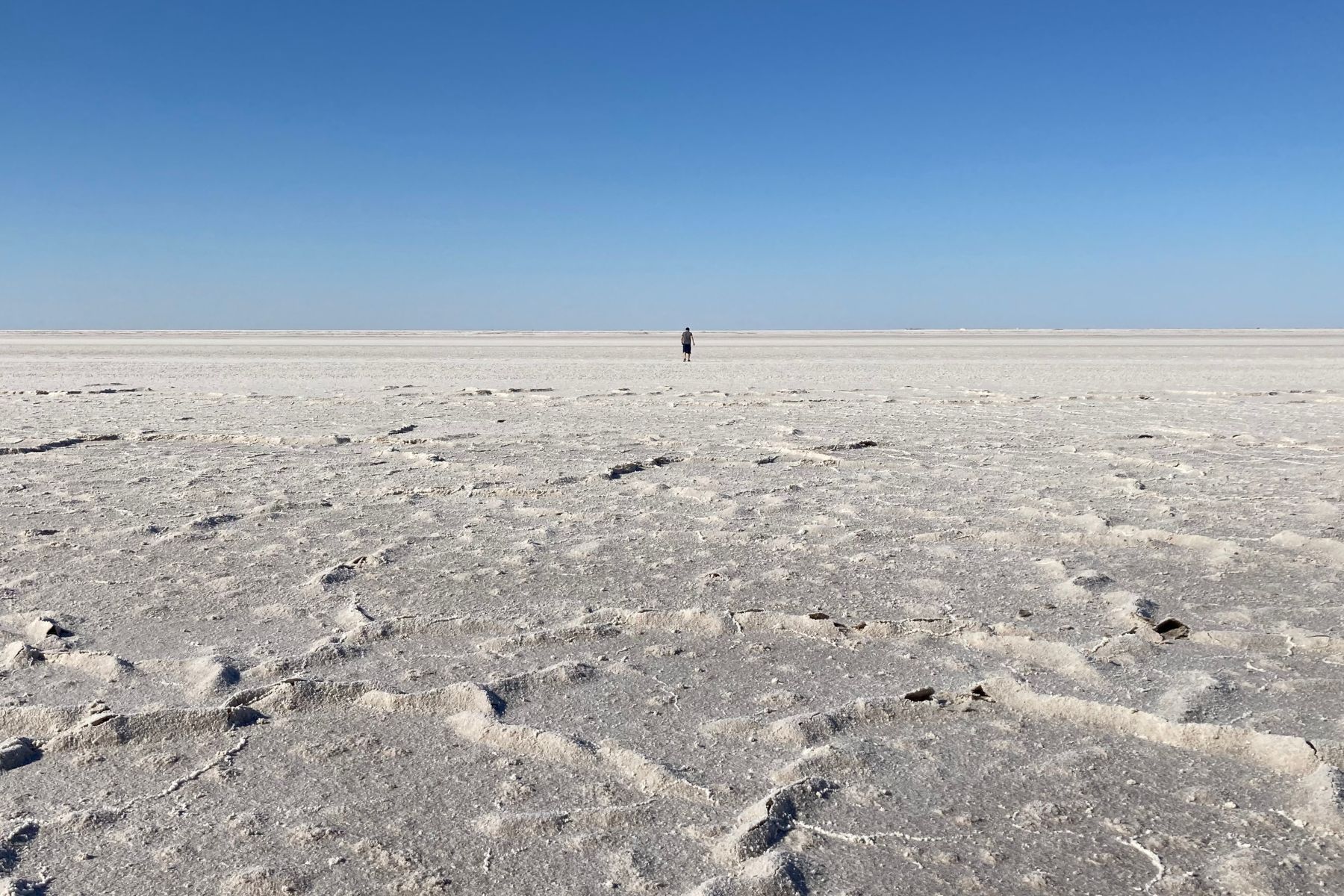
Barsakelmes
Reminiscent of the Salar de Uyuni in Bolivia, the world’s largest salt flats, from a distance Barsakelmes looks like a layer of snow has fallen on the desert of the Ustyurt Plateau. Get closer, however, and you will see that the white colour is a thick crust of salt, crunchy under foot, stretching as far as the eye can see. Thirty million years ago this area was at the bottom of the a salt water lake but the water has long since evaporated, leaving only the salt behind.
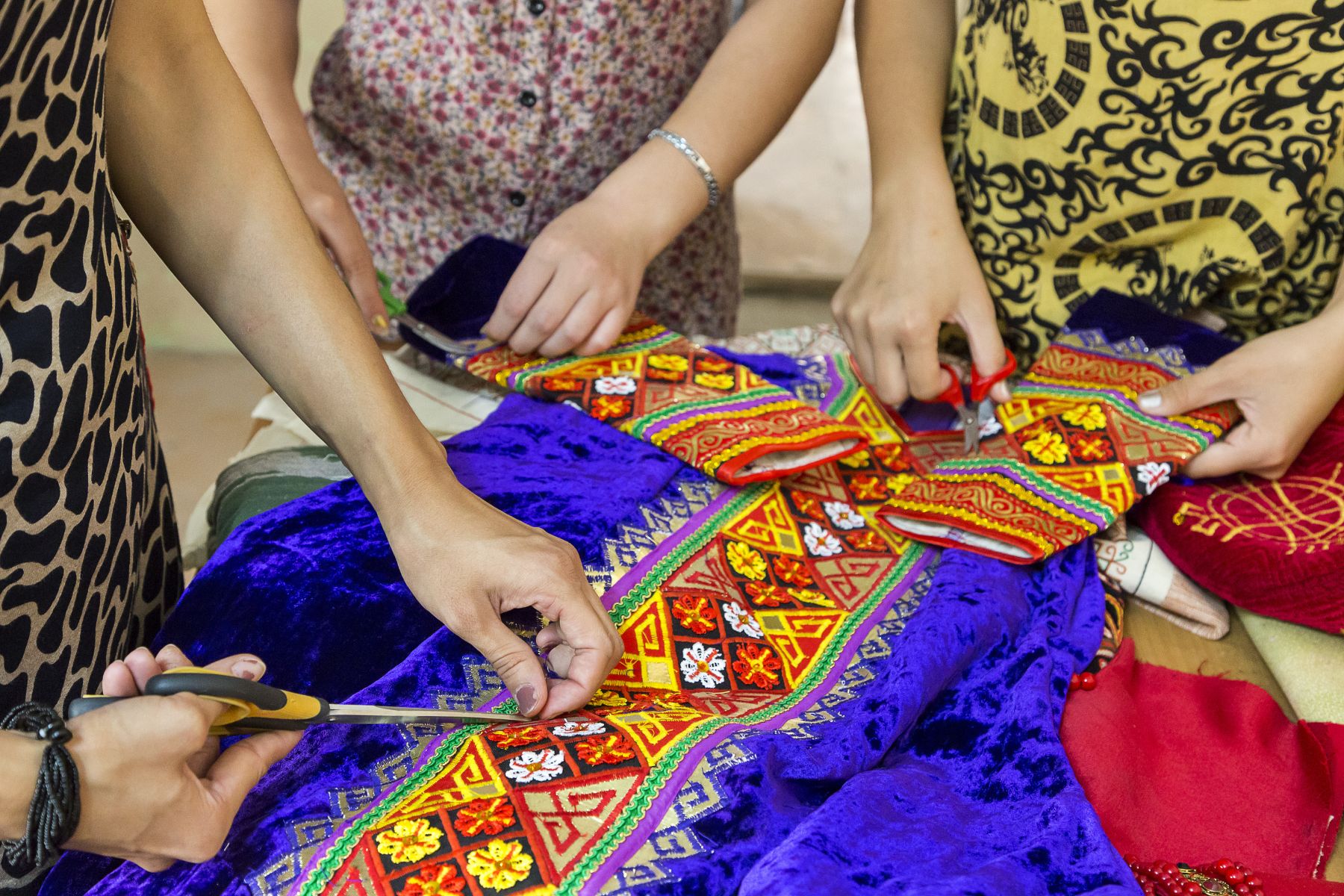
Craft Workshops
Karakalpakstan’s folk art traditions are thankfully not confined only to its museums but are being preserved and further developed by a new generation of artisans. The best way to see and learn about their work is with a visit to Chimbay where a number of workshops are open to the public. Here you can watch anything from yurt building and reed weaving to jewellery making, felt making and embroidery. Contemporary artist Daribay Tadjimuratov has his studio here, too.
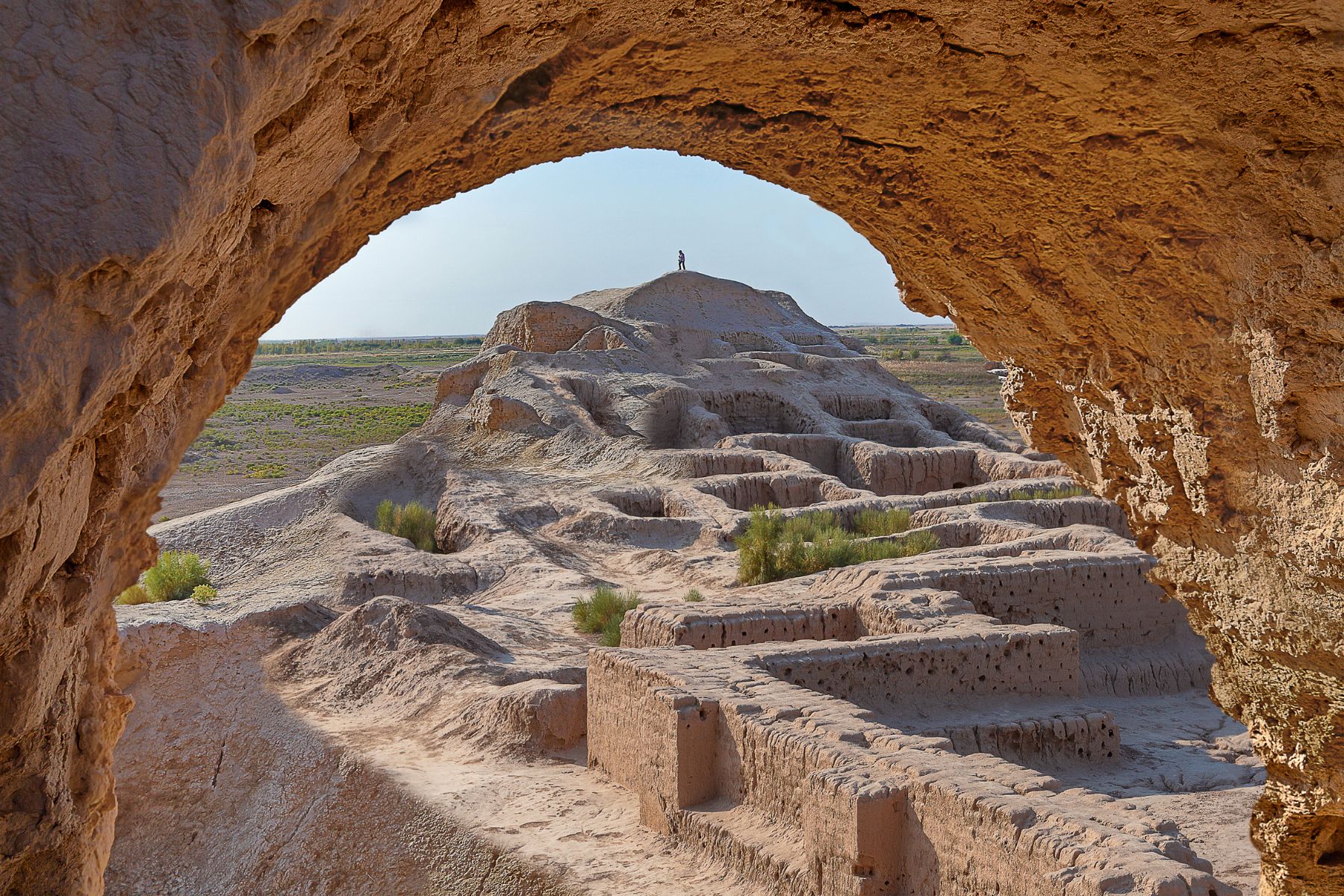
Desert Fortresses
The Desert Castles of Ancient Khorezm are on UNESCO’s Tentative List and are likely to be given World Heritage Site status in the foreseeable future. There are more than 50 of these extraordinary mud-brick structures spread across Karakalpakstan and neighbouring Khorezm, the oldest of which date back to the 7th century bc. The most impressive examples include Ayaz Kala, Toprak Kala and Jampik Kala, but even the smaller fortresses give a good feel of just how fiercely this territory was fought over and the lengths communities had to go to to protect their safety and ways of life.
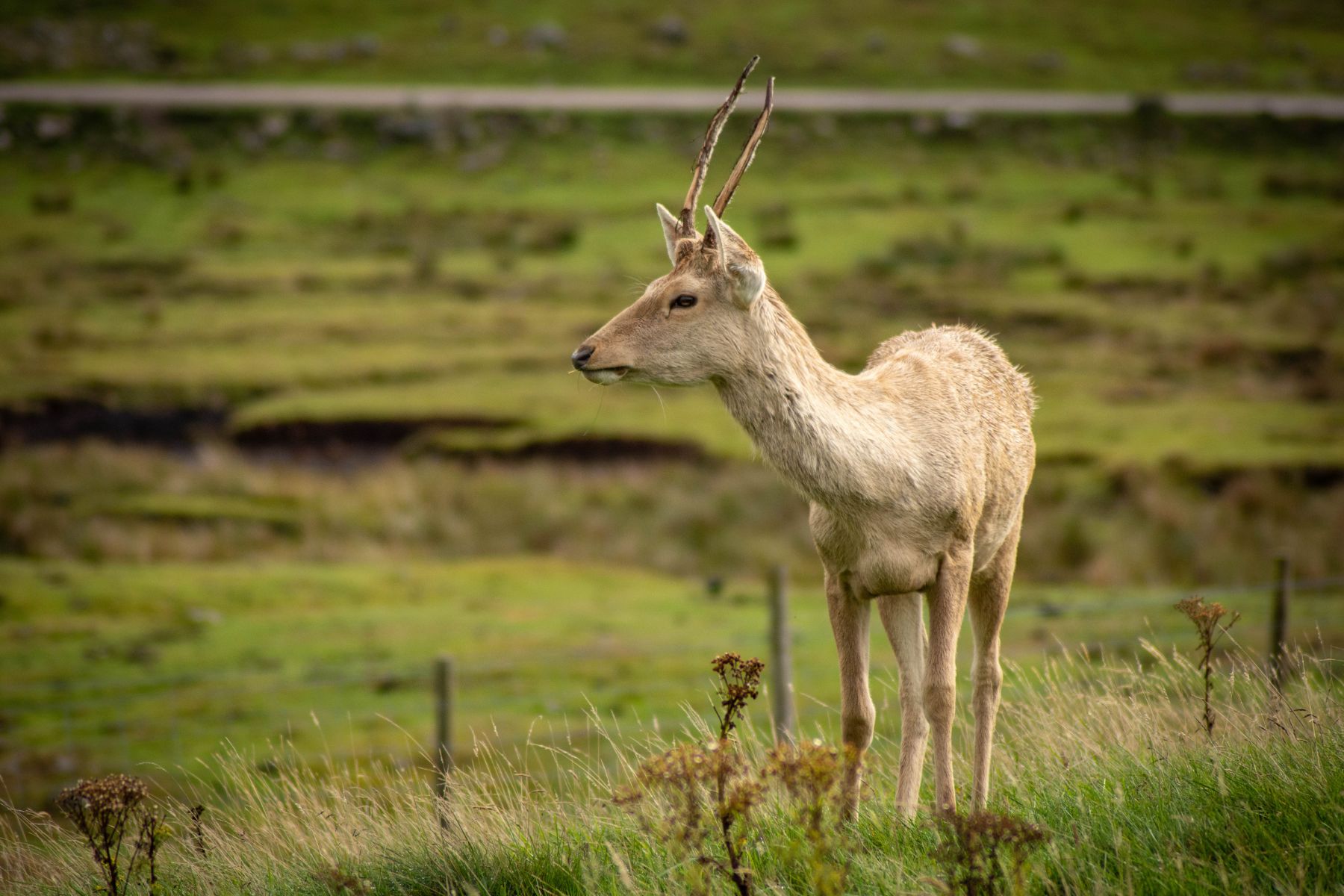
Lower Amudarya State Biosphere Reserve
LABR is the most developed protected area in Karakalpakstan, with basic tourism infrastructure and a well-run breeding and conservation programme for the highly endangered Bukhara deer. Visitors are guaranteed to be able to see the deer within their enclosure, but as it is now estimated that there are in excess of 1,600 deer in the reserve, you stand a very good chance of seeing them in the wild, too. During our visits in August and September we saw dozens of them wandering through the tugai forest and drinking from and swimming in the Amu Darya, which runs through the reserve.
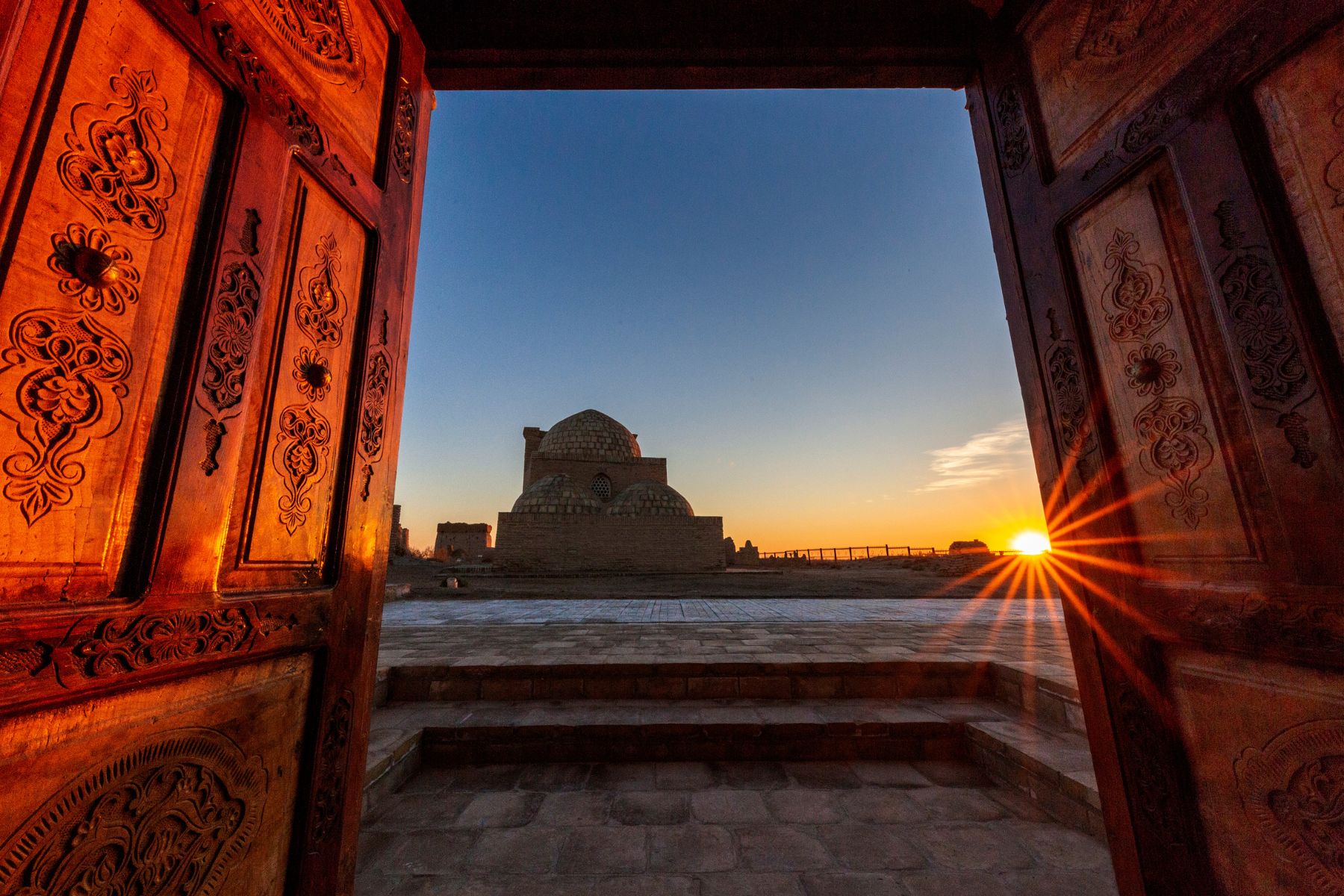
Mizdakhan
Founded in the 4th century bc, Mizdakhan is one of Karakalpakstan’s most ancient and sacred sites. A local legend says that it is the burial place of Adam and that when the last brick falls from his mausoleum, the world will end. It’s what is called an armageddon clock. Whatever your religious beliefs, archaeologists are confident that this was the second largest city in Khorezm after Konye Urgench and, even after the Arab Conquest, Zoroastrian practices continued to be entwined here with the newly introduced faith of Islam.
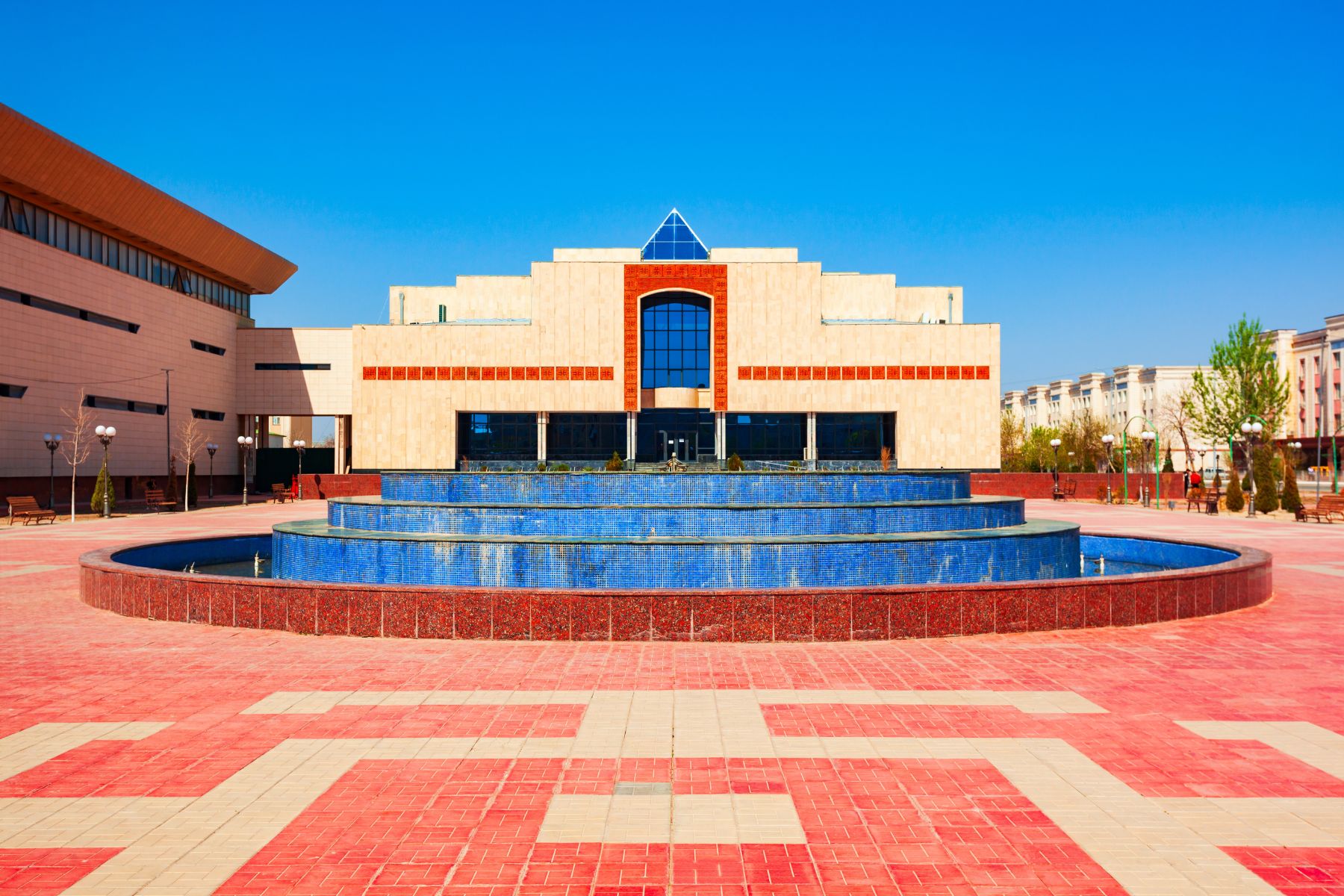
Savitsky Museum
Often described as the Louvre of the Steppe, the Savitsky Museum is Karakalpakstan’s greatest treasure. Founded in the 1960s to exhibit archaeological finds and Karakalpak folk art, the museum has become world famous thanks to its remarkable collection of Central Asian and Russian avant garde art. The story of how these artworks – many of which were by artists purged by Stalin – came to be in Nukus is almost as extraordinary as the paintings, sculptures, graphics and prints themselves.
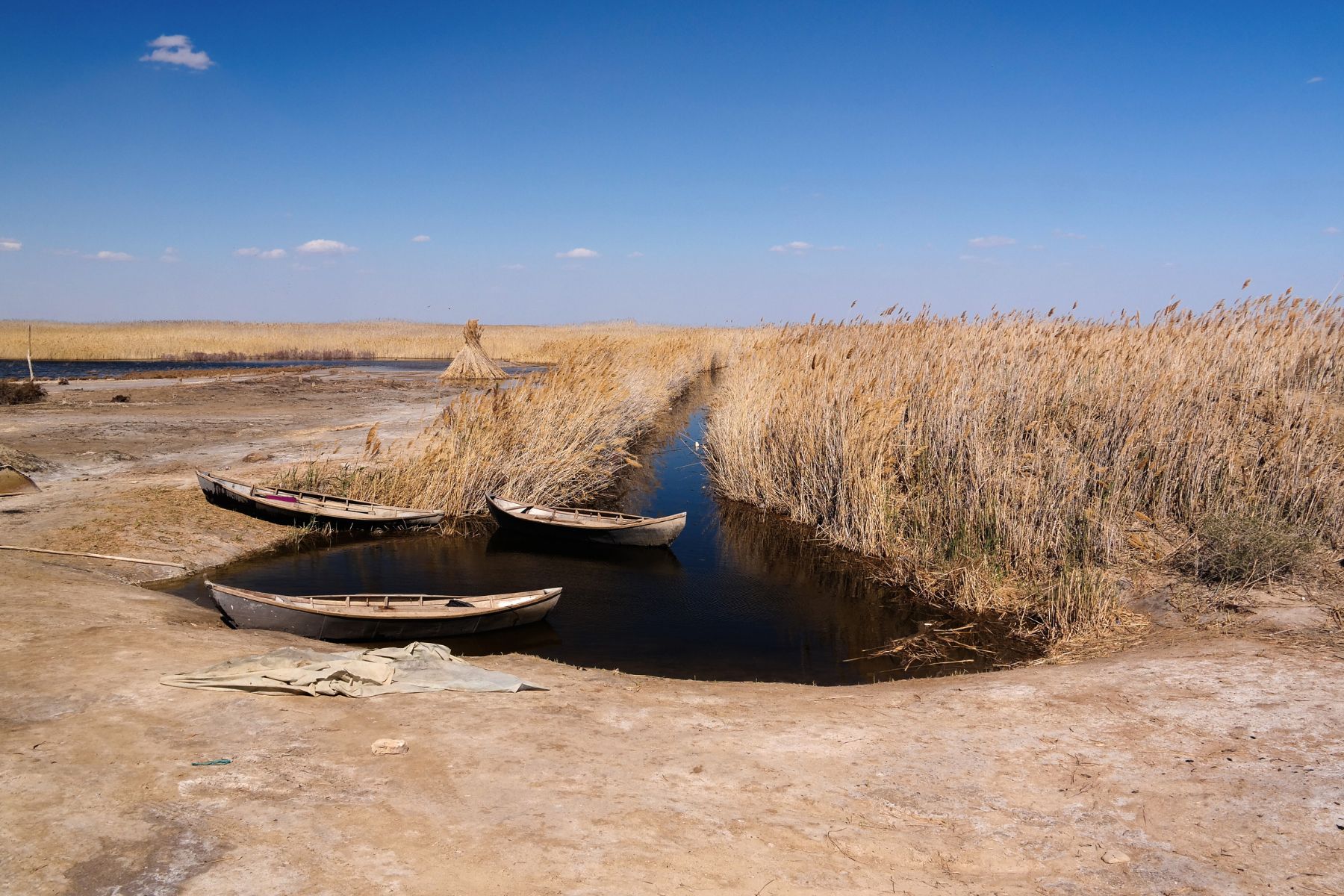
Sudochye Lakes
There are multiple birding sites across Karakalpakstan but few can compete with Sudochye Lakes for the variety of species or the natural beauty of the landscape. It is a quiet place, relatively easily accessible from both Nukus and Muynak, and the biodiversity is particularly high in the spring and autumn when the migrant species stop by. The pink flamingos are a colourful addition to the scene, but of greater interest to serious birders are the 24 rare and vulnerable species recorded here, 13 of which are included in the International Red List of IUCN.
